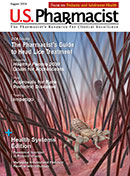Research has revealed insulin-like-growth factor 1 (IGF-1) is involved in cytokine release and subsequent inflammation in patients with acne. Additionally, research has indicated that growth hormone secretion during childhood and puberty, phases of life commonly linked with acne incidence, are responsible for increases in IGF-1. According to findings from a study published in the Journal of Cosmetic Dermatology, individuals with acne who are younger than age 21 years have significantly higher acne scores and serum levels of IGF-1 than older patients with acne.
To obtain a further understanding of serum IGF-1 levels in patients with acne, researchers conducted a case-control, prospective study in which 44 patients with acne vulgaris, and 44 age- and gender-matched control subjects without acne were evaluated. Researchers compared levels of IGF-1 between patients with acne (women, 77.3%) who were age 21 years or younger (n = 19) and those who were older than age 21 years (n = 25) (age range, 13-44 years). The researchers of this single-center study also compared the two groups in terms of insulin and glucose levels as well as acne severity. A control group consisting of 44 individuals without acne were also recruited (age range, 13-44 years), including 18 controls who were age 21 years or younger and 26 who were older than age 21 years.
The researchers indicated that acne severity was rated using the Global Acne Grading System with a rating of mild in 31.8% of patients, moderate in 38.6% of patients, severe in 22.7% of patients, and very severe in 6.8% of patients. Although the average global acne score was 24.97 ± 9.61, patients with acne who were younger than age 21 years had a substantially greater acne score compared with older patients (29.2 ± 8.7 vs. 21.8 ± 9.2, respectively; probability (P <.01). The average IGF-1 values of the overall acne group and the control group were 174.33 ± 64.9 ng/mL and 181.7 ± 46.7 ng/mL, respectively (P = .26).
Patients with acne who were 21 years of age or younger had a considerably greater average IGF-1 value compared with patients with acne who were older than age 21 years (200.01 ± 79 ng/mL vs. 154.82 ± 44 ng/mL, respectively; P = .045). The researchers found that overall, there was no substantial correlation between acne scores and levels of IGF-1 in patients with acne (P = .17). Moreover, patients with acne had an average insulin value of 11.8 ± 6.7 IU/mL and an average glucose value of 85.6 ± 8.0 mg/dL. The control group had an average insulin value of 9.7 ± 3.0 IU/mL and an average glucose value of 87.7 ± 6.5 mg/dL.
The authors also indicated that no significant difference was found between patients with acne and control participants in terms of insulin (P =.07) or glucose (P =.18) values. The authors wrote that the limitations of this study included its small sample size and single-center design.
The researchers also noted the study could have provided more clinically relevant information if it had evaluated insulin resistance coupled with glycemic index measurements of patients. The researchers concluded that with "future treatments, new drugs that will regulate the release of IGF-1 may be effective in treatment of acne in puberty."
The content contained in this article is for informational purposes only. The content is not intended to be a substitute for professional advice. Reliance on any information provided in this article is solely at your own risk.
« Click here to return to Dermatology Update.
Published September 29, 2021





